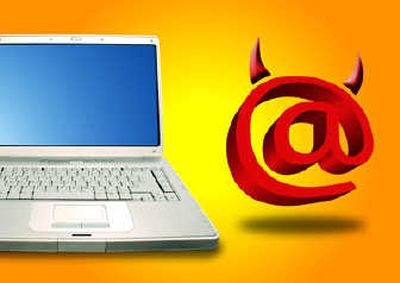Are they phishing? How to find out

How do I … identify bogus or phishing e-mails?
We’re getting plenty of phishing messages in our e-mail inboxes.
Those are messages designed to get us to give up personal information on the pretext that the message comes from a bank or business we sometimes use.
Several telltale indicators will tip you off that you’re dealing with an impostor.
Look for misspelled words or fractured grammar. Especially look at URL addresses that are meant to resemble that of a trusted source, such as mircosoft.com instead of microsoft.com.
Avoid any message that asks you to “verify” or “reauthorize” your account. No real business asks that.
If you use Internet Explorer 7, you can check the browser’s phishing-status icon, which monitors each Web site’s status. That icon, on the bottom bar of the IE window to the left of the world zone icon, tells you if a site is authentic or bogus.
Also distrust a link in a message if its Web address varies from a real site. Yahoo might use the authentic address security.yahoo.com. But be suspicious if a message wants you to visit center.yahoo-security.com.
And most of all, avoid any links that open as a simple numeric address. If a link points you to http://182.XX.XX.XX or something similar, stay away. That’s bogus.